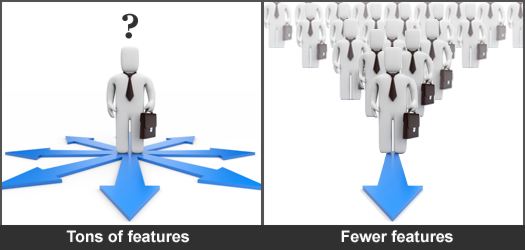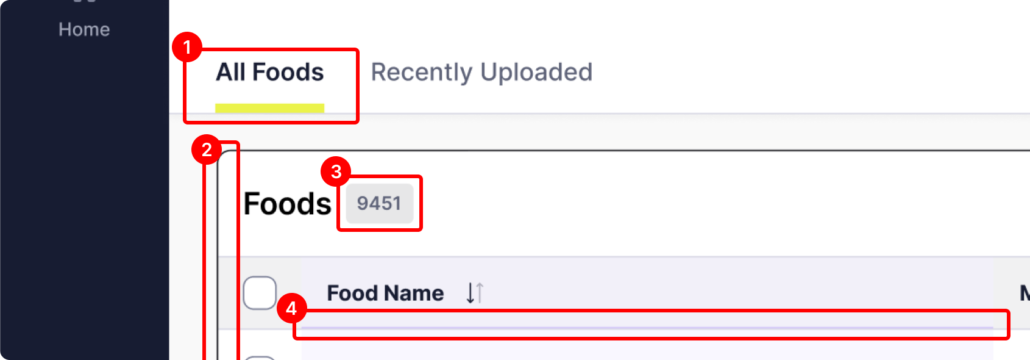
Less really does equal more (Users)
Less choices and less features = Quicker adoption
When designing an interface, every element added to the screen diminishes the focus of all the other elements and features. This is why it is so important to stop and ask whether adding that fancy new feature to your product is important enough to sacrifice the prominence of the product’s main use.
If your goal is to get users to quickly adopt and use your product, then you need to start being laser-focused on how your interface immediately answers these basic questions:
- What is your software’s primary purpose?
- What is the visual hierarchy on each screen?
- Does your visual hierarchy align with what you want the user to see/do first, second, third, etc..?
- Who is the primary user of your software?
- Are all the features in your software really essential to your core business?
- Count the number of choices a user is presented with on a single screen. Is that reasonable?
Learn from the best
These software companies have something in common – they purposely decided not to overwhelm their users with features that are not core to their product’s main use.
- Google.com: Search engine with one search field and a few text links on its homepage. Compare this to Yahoo’s “portal” homepage.
- Basecamp: Project management tool that purposely does not have all the features of Microsoft Project.
- Mint.com: Easy-to-use personal finance software. Mint gained such rapid traction that its biggest competitor, Intuit, bought them for $170 million – just two years after Mint launched.
Underdo your competition
The book REWORK has a great chapter about the benefits of making your product do less than your competitor. The chapter asks “Why does the Flip camera work when it doesn’t do everything its competition does? Because it does a few things well and targets a different market than its competition.” While most companies try to fight the competition with features, try beating them with less.




